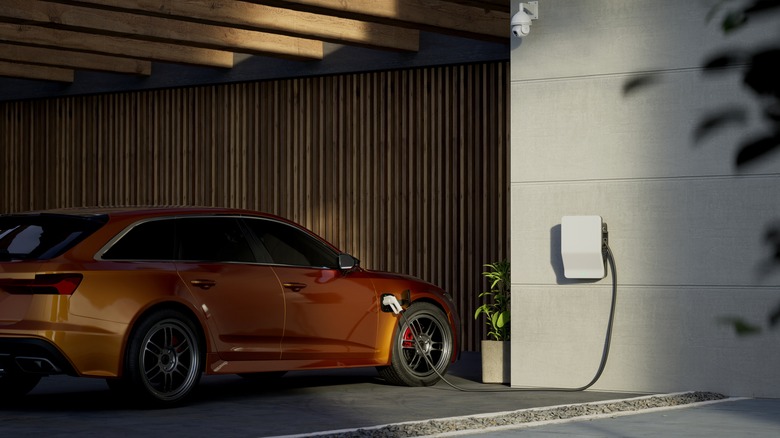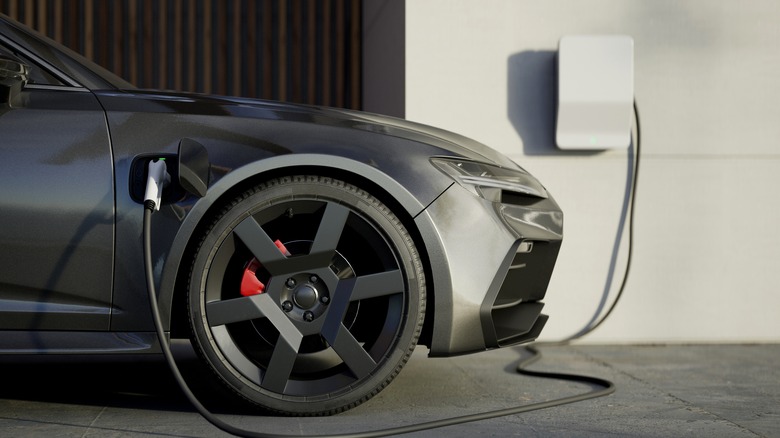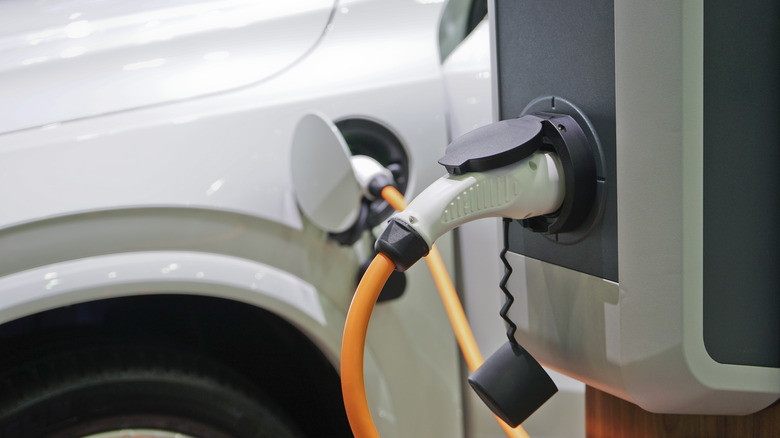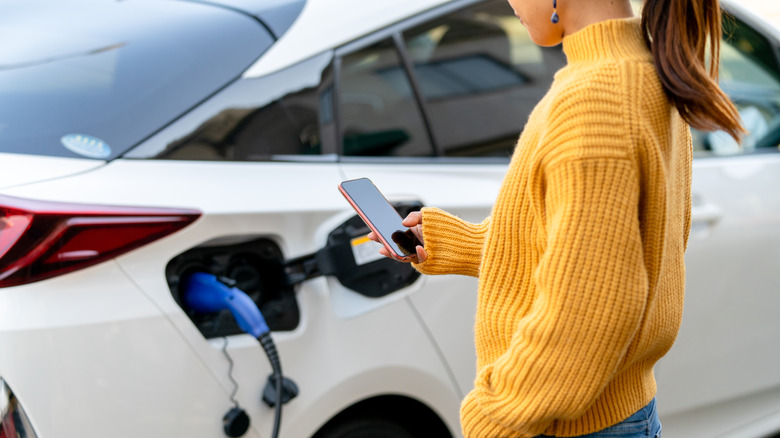3 Essential Tips For Maintaining Your EV Home Charging System
According to the Alternative Fuels Data Center (AFDC), there are 157,556 electric vehicle service equipment (EVSE) ports in the United States as of November 2023. Among EV charging levels, over 120,270 or 77% of the existing charging ports are Level 2 EVSE, which can take up to 10 hours to reach 80% capacity.
While electric vehicle (EV) charging methods are definitely improving with time, the reality is that EV charging remains a pain point for drivers. Although faster EV chargers have been invented, they're not exactly easy to come by and cause a lot of range anxiety for existing EV owners. Although there are hundreds of thousands of public EVSE ports, AFDC shares that 30% of them are in California. If you live in a state with fewer charging points, such as Alaska, with only 114 EVSE ports, you're likely charging from home.
Knowing this, it's not surprising that CNBC reports that most EV owners do most of their charging at home with auto-maker or third-party-provided Level 2 home chargers. In 2023, the National Renewable Energy Library (NREL) shared that the number of EV charging ports at home is only getting higher, with a 3.4% increase in private ports in Q2 2023.
Unfortunately, there are a lot of surprising costs in maintaining an electric vehicle, including your home battery system. So, if you're one of the many EV owners who rely on home charging most of the time, here are some tips on how to maintain it.
Regular inspection
For Level 1 and 2 home chargers, the most maintenance you'll typically need is occasionally checking for any potential damage on your cables and plugs. This can come in the form of scratches, holes, burns, or bite marks.
For people who use their EVs daily, this should come naturally, as you're bound to notice if there are any bite marks or scratches on your charging cables. Thankfully, there are many things you can do to mouseproof your garage. Under ideal conditions, your home charging stations are designed to last years before they require servicing.
When installing an EV charging system at home, the Electrical Safety Authority recommends hiring only a licensed electrical contractor to avoid any risks to you, your electric vehicle, or your home. Aside from checking the charging system yourself, it may do well to have a professional look at it now and then.
If you used an unlicensed worker to initially install your charging system, you may want to get it inspected by a licensed professional right away. Not only can they spot potential issues beforehand, but they'll also be able to tell if you have the appropriate electrical panel that handles the load of your EV charging system in your home.
Cleaning the home charging system
First things first, you should always turn your charger off, switch off its isolator, and unplug your charger when cleaning it. Aside from preventing any electric accidents, it can also help prevent accidental damage to your charging cables or your electric vehicle itself if it's connected.
Next, use a dry towel on the connector and a moist cloth on your charging unit's body. If you notice your EV is charging slower than usual, sweep a Q-tip over its charging contacts to get rid of any dirt. However, you should avoid having any sort of liquid in contact with your charging contacts when doing this.
When cleaning the external parts of your charger, you should use a soft, non-abrasive cloth or sponge, along with a mild cleaning solution diluted with water. It's important to avoid using harsh chemicals and abrasive materials because they could scratch or damage the charger.
Then, gently wipe the external portions, but be careful to avoid pushing debris into crevices. Next, thoroughly dry the charger after cleaning to avoid moisture build-up. In the same line of thought, it's best to avoid using high-velocity water, such as a pressure washer or hose on your EV charger, to avoid damaging its electrical components.
Storage
Though it depends on your EV manufacturer, charging cables typically start at 18 feet in length. When not managed, this charging cable can become a tripping hazard in your garage, so it's best to ensure good wire management practices.
To do this, you can use cable retractors or suspend them on a wall or stand. Aside from not causing you to fall in your face, this can also mean less damage to your charging cables from being stepped on and prevent tangles from occurring.
For EV owners who have an outdoor charging station, it's ideal to get home chargers that have been rated specifically for outdoor use. Unlike a garage, outdoor charging stations, as well as your charging EV, will be consistently exposed to the elements.
With this, it's best to pick an area on your property with enough insulation. Not to mention, it's best to keep it in a shaded area to avoid damaging your EV battery from heat or cold exposure during the charging process. If you live an area with a lot of stray animals, it's best to opt for indoor charging to avoid potential issues with bite marks.
Caring for your EV holistically
Regardless of whether you're driving the latest electric car, trying something halfway with a hybrid, or still sticking with your traditional gas vehicle, you have the responsibility to maintain your vehicle, including making sure it doesn't cause problems on and off the road.
By having a well-maintained home charging system, you can ensure the overall efficiency of your electric vehicle. Because so much of an electric vehicle's hidden carbon footprint comes from its manufacturing and end-of-life processes, keeping your car on the road for as long as possible can significantly help lessen your overall environmental impact. In fact, by caring for your vehicle holistically, you can not only help prevent expensive electric vehicle repair issues but also help avoid hazards like unexpected injuries or fire for other people.
In its Electric Vehicle Charger Selection guide, the California Energy Commission (CEC) states that although actual charger upkeep can be minimal, the warranty price will likely cover the majority of its maintenance cost in most cases. In a high-cost scenario, it notes that annual extended warranties for DC fast chargers can cost more than $800 per charger annually.
On the other hand, Level 1 and Level 2 chargers may have a fixed-length warranty for a lower cost. However, you'll have to cover any costs that arise afterward. On top of this, the CEC also mentions you should expect to spend $400 per charger annually for general maintenance, which includes basic cleaning, damage repair, and so on.




